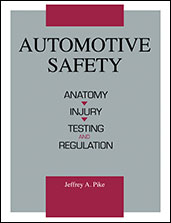Book

Neck Injury
2002-10-01
This book draws upon a variety of the author's experiences during more than 25 years in automotive safety. It gives an introduction to plain film radiographs (x-rays), computed tomograms (CTs), and magnetic resonance images (MRIs) such that vehicle safety professionals can use these techniques to help piece together the puzzle and provide a better understanding of the relationship between vehicle crash scenarios and occupant injury. For those with a primarily vehicle background, Neck Injury provides an overview of how x-rays, CTs, and MRIs may be used as a source of information to help analyze vehicle crashes and the associated injuries. For those with a clinical background, the book provides insight into how injuries relate to the vehicle crash. Chapters cover: Anatomy Imaging Injuries and Injury Mechanisms


